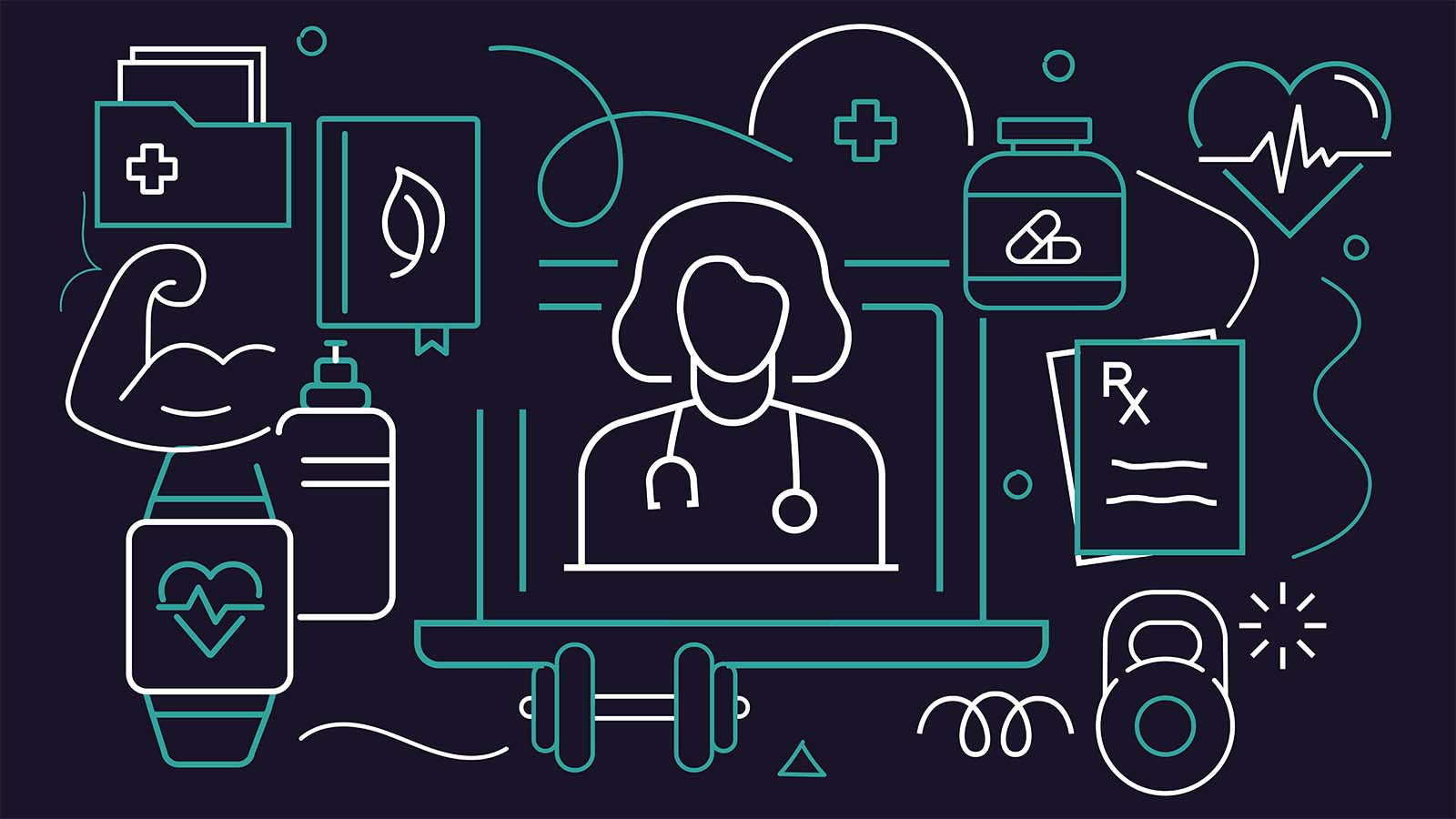Even as today’s data-driven advances improve R&D productivity, traditional clinical trials remain a central bottleneck in drug development: slow, costly and overly reliant on static, intuition-driven designs. No wonder pharma’s R&D returns have, for years, lagged the cost of capital.
A new model, rooted in advanced computational simulations that replicate the structure and purpose of traditional clinical trials, will soon transform how tomorrow’s therapies get to patients, how long it takes and how much it costs. There are no shortcuts in clinical development, but in silico trials offer a pathway to overcome some of its most intractable challenges.
A new era of clinical trial simulation: In silico trials explained
Today, expert committees design clinical trials based on precedent, personal clinical expertise and intuition, locking them into place before a single data point is generated. Patient recruitment is unpredictable, timelines slip and trial amendments add months and millions. Every trial is a high-stakes bet made with incomplete information—one design, one chance to get it right.
Now imagine a world in which investigational assets pass through millions of simulated trials before a single patient is enrolled. In this world, generative AI techniques—such as generative adversarial networks (GANs) and large language models (LLMs)—create thousands of virtual patient cohorts and possible protocol variants.
Next, mechanistic models, such as physiologically based pharmacokinetic (PBPK) and quantitative systems pharmacology (QSP), simulate how a therapy interacts with biological systems across these virtual patient cohorts. Statistical and machine learning (ML) methods then evaluate the simulated responses, estimating not only clinical efficacy and safety but also the probability of technical and regulatory success.
In parallel, operational simulations model real-world constraints—such as recruitment timelines, site readiness and protocol complexity—to ensure each design is both effective and feasible. These insights roll into a decision engine that weighs every objective to identify the optimal path, often triggering new iterations to refine the trial design before it ever reaches patients.
While using simulations to optimize trial design remains nascent, these emerging methods lay the foundation for something even more groundbreaking: Using fully virtual trials that could one day reduce—or even eliminate—the need for traditional patient enrollment in select contexts.
Making the leap to true in silico trials
Most pharmaceutical companies are already using model-informed drug development (MIDD) techniques to support development decisions around dose selection, trial design and regulatory submissions. These methods, which use computational modeling to simulate biological systems and predict clinical outcomes, have significantly improved decision quality and efficiency.
While many of these models are foundational in silico techniques, what’s limited their impact is the lack of broader data infrastructure, integration across functions and the computational power to enable true model-first clinical development.
True in silico trials won’t replace MIDD techniques. They'll expand on them. The goal is to drive greater adoption of data-driven modeling approaches, to use ML to improve them and to build out the rest of the data and operational systems around them. Instead of modeling techniques that produce one-off insights that drive individual development decisions, companies will be able to run end-to-end simulations that guide trial optimization.
How do in silico clinical trials work?
In silico methods are the underlying modeling techniques that allow clinical trial leaders to generate insights by simulating trial elements. Real-world data (RWD), such as electronic health records, historical clinical trial data and patient registries, represent the largest and most critical source for developing and refining these models—especially in early stages.
While these methods can be applied to a growing number of applications, and in increasingly sophisticated combinations, we’ve developed a blueprint of six tightly integrated, modular components that comprise the essential building blocks of in silico clinical trials.
Together, these modules can be combined to create a progressive simulation engine, with each module feeding into or interacting with the next to simulate different aspects of a clinical trial.
The building blocks of in silico clinical trials
Simulation pipeline modules
Module 1: Synthetic protocol management
Uses LLMs, optimization techniques and simulation frameworks to create infinite possible trial designs, and then tests them using subsequent modules.
Module 2: Virtual patient cohort generation
Uses GANs and LLMs to create representative synthetic patient cohorts before exposing them to treatment simulations.
Module 3: Treatment simulation
Combines mechanistic models with ML techniques to simulate how a drug interacts with virtual patients, and then feeds results into outcome-prediction models.
Module 4: Outcomes prediction
Uses statistical and ML techniques to map simulated treatment responses to clinical endpoints and estimates the probability of technical and regulatory success.
Module 5: Analysis and decision-making
Uses AI to synthesize outputs from across the simulation pipeline to guide strategic trial decisions. Also uses AI and optimization algorithms to compare scenarios, quantify trade-offs and recommend protocol adaptations based on predicted success rates, operational feasibility and commercial potential.
Module 6: Operational simulation
Uses AI and predictive analytics to model site activation, patient enrollment, budget impact and other operational factors to help reshape trial protocols based not just on scientific merit but on how realistic they are to run.
From methods and modules to real-life in silico use cases
Although the use of in silico methodologies is nascent, companies are beginning to incorporate use cases that build on and interact with each other across the entire clinical development pathway. Unlike traditional trials, in silico simulations don’t move in a straight line. Outputs from one stage can feed back to refine earlier modules like protocol design or cohort generation.
Over time, incorporating new in vivo trial data and additional RWD transforms in silico trials into continuously improving systems, where each new dataset enhances subsequent simulations.
In silico clinical trial use cases across the drug development life cycle
| Stage | Use cases | Examples |
|---|---|---|
| Preclinical |
PBPK models predict tissue distribution in virtual organisms to help fine-tune delivery strategy. In silico toxicity screening aids asset prioritization by flagging risky compounds early. In silico methodologies reduce the use of animal studies. |
Roche used neural ordinary differential equations as an AI-based surrogate for a complex PK/PD system of T-DM1, an antibody drug conjugate. This model outperformed traditional methods, improving dose selection and reducing trial and error. |
| Early development |
In silico cohorts supplement small proof-of-concept studies. AI-generated virtual patients help optimize dosage, refine endpoints using biomarkers and stratify patients by predicted response. |
AstraZeneca deployed a QSP model and virtual patients to accelerate its PCSK9 therapy development, continuously updating it with phase 1 and competitor data and securing clearance to start phase 2 trials six months early. |
| Registrational |
Trial simulations optimize trial design and operations. Digital twins reduce the need for placebo arms. Models inform regulatory submissions, sometimes replacing entire trials. |
Pfizer used computational pharmacology and PK/PD simulations to bridge efficacy between immediate- and extended-release tofacitinib for ulcerative colitis, with the FDA accepting this in silico evidence instead of requiring new phase 3 trials. |
| Post-approval |
In silico models assess long-term safety and efficacy and simulate label expansions. Virtual twin predictions power clinical decision support tools. |
BMS partnered with PathAI to develop AI-powered pathology models that analyze tumor slides for biomarkers such as PD-L1 expression and CD8+ T-cell infiltration. One PD-L1 scoring tool identified more eligible patients than manual review, improving both development efficiency and patient response rates. |
Looking ahead, the industry should expect in silico methods to quickly proliferate across the R&D life cycle, with models eventually being used to simulate nearly every process and inform every decision. Eventually, this will create a self-reinforcing system wherein each node in the pathway enhances every other one, with upstream models informing downstream decisions and real-world outcomes looping back to refine those models over time.
Why now is the time for clinical transformation with in silico trials
In silico modeling in life sciences is not new. As far back as the early 2000s, medtech companies began using finite element analysis (FEA) and computational fluid dynamics (CFD) to simulate stents, heart valves and orthopedic implants. With the growth of computing power and increased regulator acceptance, these models came to supplement—and, in some cases, even replace—animal and human testing in clinical trials for medical devices.
Other highly regulated industries, such as aviation and structural engineering, have also shown that adopting in silico methods at scale is both feasible and effective in driving speed, efficiency and confidence in complex systems where safety is paramount.
Many in silico methods have demonstrated value for years as discrete use cases but remain sparingly adopted even at their current maturity level. What makes this moment unique is the convergence of three critical factors:
- Data availability: Advances in wearables, RWD capture and omics technologies—combined with falling costs—have created a surge of rich, multimodal biomedical data (the UK Biobank alone possesses more than 30 petabytes). This data allows us to train models with greater breadth and depth than ever before.
- Computational power: Advances in cloud computing, AI accelerators and distributed infrastructure enable simulations that were prohibitively resource-intensive just a few years ago. Major players such as Google and Oracle are investing heavily in scalable platforms that support biomedical modeling and real-time analytics.
- Regulatory momentum: Years of increasing regulatory support for in silico methods have provided a significant runway for pharma companies to experiment with advanced modeling in drug development. Just this year, the FDA announced plans to phase out animal testing requirements for monoclonal antibodies and other drugs in favor of more effective human-relevant methods, including AI-driven computational models. (The European Medicines Agencies is heeding the same approach). Separately, the FDA has grown more receptive to flexible evidence pathways for rare diseases, and it recently launched an agencywide AI tool for streamlining agency reviews—signaling a general warming to AI methods in clinical development.
Reimagining clinical development around in silico trial models
If only shifting to in silico trials were as simple as upgrading tools or improving a series of processes. In silico trials challenge the way protocols are designed, data is generated, teams are structured and decisions are made. Capturing the full value requires nothing less than a total transformation of the clinical development operating model.
To capture the full value of in silico trials, pharma companies must reimagine not just their tools but also their capabilities, structures and roles. In short, they’ll need to build an ecosystem designed around simulation-first R&D. Achieving this shift requires transformation across three dimensions.
Dimension 1: Technical systems and enterprise capabilities
Realizing the full potential of in silico trials will require a reengineered foundation that spans both technical systems and organizational design. It starts with four core building blocks:
- Simulation-first protocol design. Design becomes an iterative, simulation-first process that generates and tests thousands of protocol permutations across synthetic populations before a single patient is enrolled.
- Data as a strategic asset. In a simulation-first development model, data isn’t just a record of what happened. It’s the fuel that powers what happens next. Every data point informs future simulations, making data both the input and the output. It demands data that not only meets FAIR principles of findability, accessibility, interoperability and reusability, but also that is longitudinal, multimodal and designed for reuse.
Most organizations will need to build clear data strategies at a disease or even therapeutic-area level, and they’ll need to support it with next-generation capabilities for ingestion, curation, modeling and delivery as AI-ready data assets.
- Model ecosystems. Isolated models may support isolated decisions, but in silico trials require a coordinated ecosystem of interoperable models. These mechanistic, statistical and generative models must work in concert across trial simulation, outcome prediction and operational planning. In the future, modeling will shift from a niche scientific function to a strategic enterprise capability, requiring a shared language across clinical science, biostatistics, informatics and operations.
- Scalable, orchestrated simulation environments. These environments must support dynamic orchestration of models and data spanning multiple teams and trial scenarios. This includes both the technical infrastructure as well as robust systems for model validation, traceability and explainability.
Dimension 2: Organizational structure
Although data and models will power in silico clinical trials, the shift requires changes to organizational structure, roles and culture to achieve scale.
Collaborative, cross-functional execution. Today’s clinical development functions often operate in silos, with specialized teams working in parallel but not necessarily in sync. Specialized functions—such as biostats, clinical science, data management and operations—work in sequence, with handoffs and limited collaboration. In a simulation-first model, success depends on integrated teams operating with shared purpose, real-time collaboration and collective accountability for simulation outcomes. This is crucial as in silico models increasingly span scientific, operational and regulatory domains, requiring close coordination across disciplines.
Dimension 3: Roles reimagined
In the in silico era, it’s vital to build teams combining deep functional expertise with a shared, end-to-end view of the development process to work together across design, simulation and decision-making. While many roles will persist, their scope and mindset will need to change. For example:
- Clinical scientists will evolve from protocol owners to simulation orchestrators who design in silico experiments and interpret the iterative results from AI-generated trials.
- Biostats and programmers will transform into a computational science team that blends traditional statistical and programming methods with ML, digital twin design and uncertainty modeling.
- Data management must be fundamentally reimagined through automation and AI to free up capacity and evolve into a broader clinical informatics function with deep expertise in biometrics, bioinformatics and data science.
- IT and engineering teams will need to build and maintain high-performance platforms designed for simulation and capable of supporting complex, iterative trial design at enterprise scale.
- Senior R&D leaders must actively champion the in silico vision by empowering functional leads to drive the structural, cultural and capability shifts required to scale simulation-first development.
Getting started with in silico clinical trials
In silico trials represent a fundamental break from the traditional clinical paradigm. This isn’t just about upgrading technology—it’s about reinventing how clinical development works. Success will require two parallel modes of execution: one that scales proven value and one that creates space to experiment.
1. Start boldly and scale what works
Some in silico applications are already delivering real-world value and should be scaled with urgency. These are four high-conviction, low-regret moves:
- Synthetic control arms. Reduce patient numbers and accelerate timelines in targeted indications by using virtual cohorts based on historical and RWD.
- Operational simulation. Optimize site selection, enrollment forecasting and scenario planning to derisk execution and improve speed.
- Scale RWD and MIDD use. Harness RWD and MIDD to shape trial design and execute with greater certainty.
- AI-ready data infrastructure. Invest in FAIR, high-quality, multimodal data assets that power simulation and decision-making at scale.
These aren’t speculative bets. They deliver impact now and build the foundation for a broader in silico future.
Get started: For validated use cases, such as synthetic arms or model-informed dosing, engage early with regulators via the FDA’s Center for Clinical Trial Innovation, MIDD’s Paired Meeting Program or the EMA’s scientific advice to align expectations.
2. Reinvent the model, one venture at a time
For more exploratory applications, a different approach is needed. Organizations should establish dedicated in silico ventures featuring small, empowered teams operating outside the constraints of the existing development model. These “skunk works”-style units can test new approaches for:
- Developing digital twins and virtual cohorts. Use AI and RWD to simulate patient outcomes and better predict trial performance.
- Designing protocols with AI, not instinct. Let virtual populations guide iterative protocol development before a single patient is enrolled.
- Pilot new roles and workflows. Build team structures purpose-built for in silico execution, with integrated science, ops and data expertise.
- Build ex-pharma partnerships. Collaborate with data and technology innovators to expand your in silico capabilities and ecosystem.
The goal: Learn fast, fail smart and bring successful models back into the core at scale.
Get started: For novel methods like AI-generated digital twins, seek early feedback through the FDA’s Innovative Science and Technology Approaches for New Drugs program or EMA’s Innovation Task Force to derisk your path.
In silico trials aren’t a panacea for what ails clinical development, but they’re close. They represent a once-in-a-generation opportunity to reinvent how drugs get to market. In addition to bringing more therapies to patients, faster and at lower costs, in silico trials offer the chance to reduce trial burden, improve hit rates and expand access to trial participation and new therapies. They'll also make clinical development more adaptive, ethical and efficient.
As we look ahead, it’s not a question of if, but who. The companies that lead with an end-to-end in silico development model will define the future of faster, smarter clinical development.
If you’re ready to start building the future of clinical development, connect with a ZS R&D digital transformation leader to explore how simulation-first strategies can accelerate your path to impact.
The authors would like to thank Mike Martin, Kim Walpole, Sowmyanarayan Srinivasan, Sam Dowd and Nicolas Yanovsky for their intellectual and creative contributions.
















